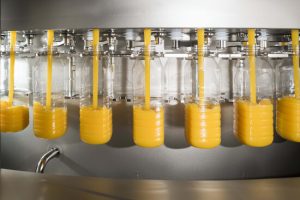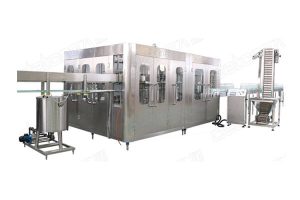The process of extracting juice from fruits is a delicate balance between maximizing yield and maintaining juice quality. Whether it’s a small kitchen setup or an industrial-scale operation, understanding the key stages of juice extraction can help improve efficiency and product quality. In this article, we will take a closer look at the steps involved in fruit juice production, including crushing, juicing, pressing, and clarification.
1. Crushing and Juicing: Maximizing Yield without Compromising Quality
Juice extraction begins with crushing the fruit, a step that varies depending on the type of fruit and the desired end product. For many fruits, the goal is to extract as much juice as possible while avoiding the undesirable components such as seeds, skins, and cores. In some cases, the fruit can be directly pulverized, while in others, more delicate techniques are required.
For fruits with tough skins or seeds, mechanical peeling or manual methods may be used. For example, contour peelers used with apples can be adapted for other firm fruits, whereas for more delicate fruits like pineapples, specialized peeling machines are necessary. It’s crucial to separate the edible flesh from the inedible parts to prevent any undesirable flavors or textures from contaminating the juice.
Once the fruit is prepared, a variety of equipment can be used for juicing. At a small scale, manual crushers or blenders work effectively, but on a larger scale, mechanical extractors such as screw presses or paddle pulpers are common. These machines separate the juice from the pulp, and in some cases, further steps like enzyme treatment or heating are used to increase yield.

2. Pressing: Extracting More Juice
After the fruit is crushed, the next step in the process is pressing. This step can be done manually or using hydraulic presses, which are common in both small and large-scale operations. For industrial-scale production, continuous screw presses or belt presses are used to handle large volumes of fruit.
Pressing systems work by applying pressure to the crushed fruit, forcing the juice out of the pulp. In some cases, additional press aids like rice hulls are added to help the juice flow more easily and increase yield. However, over-pressing can result in undesirable substances like seeds or skin being extracted into the juice, so careful monitoring is essential.
3. Clarification: Achieving a Clear, Smooth Juice
Once the juice has been extracted, clarification is the next step to remove any remaining solids and impurities. Many juices, particularly those from fruits like apples or oranges, can have a cloudy appearance due to suspended particles. If a clear juice is desired, methods such as centrifugation or filtration are used.
Centrifugation is a highly effective method for separating solids from the juice by spinning the juice at high speeds, causing the heavier particles to settle at the bottom. In contrast, filtration involves passing the juice through a filter bed, which traps any remaining solids. For highly turbid juices, a combination of these methods may be used.
While both methods are effective, each has its pros and cons. Centrifugation is faster but can be costly, while filtration, though more affordable, can be slower. In some cases, enzyme treatment is also used to break down pectin and other substances that contribute to cloudiness.

4. Deaeration: Protecting the Juice Quality
Throughout the juice extraction process, the juice is exposed to air, which can lead to undesirable reactions like browning and nutrient degradation. To protect the juice’s color, flavor, and nutritional content, deaeration is an important step.
Deaeration involves removing oxygen from the juice, typically by placing it in a vacuum chamber or by saturating it with an inert gas like nitrogen or carbon dioxide. This helps preserve the juice’s quality and extends its shelf life. However, it’s important to note that some aroma compounds may also be lost during the deaeration process, so the method should be chosen carefully based on the fruit type and desired end product.
Conclusion: Streamlining Juice Extraction for Maximum Efficiency
The juice extraction process is a blend of science and art, requiring careful attention to detail at each stage. From the initial crushing and juicing to the final clarification and deaeration, each step plays a crucial role in determining the quality and yield of the juice. By using the right equipment and techniques, manufacturers can optimize the juice extraction process, ensuring that the final product is both flavorful and nutritious.
If you’re looking to enhance your juice production capabilities or need expert advice on optimizing your processing systems, DATONG is here to help. Our team of professionals specializes in offering high-quality, reliable equipment solutions that streamline production processes. Reach out today to learn more about how we can assist you in achieving your production goals.
